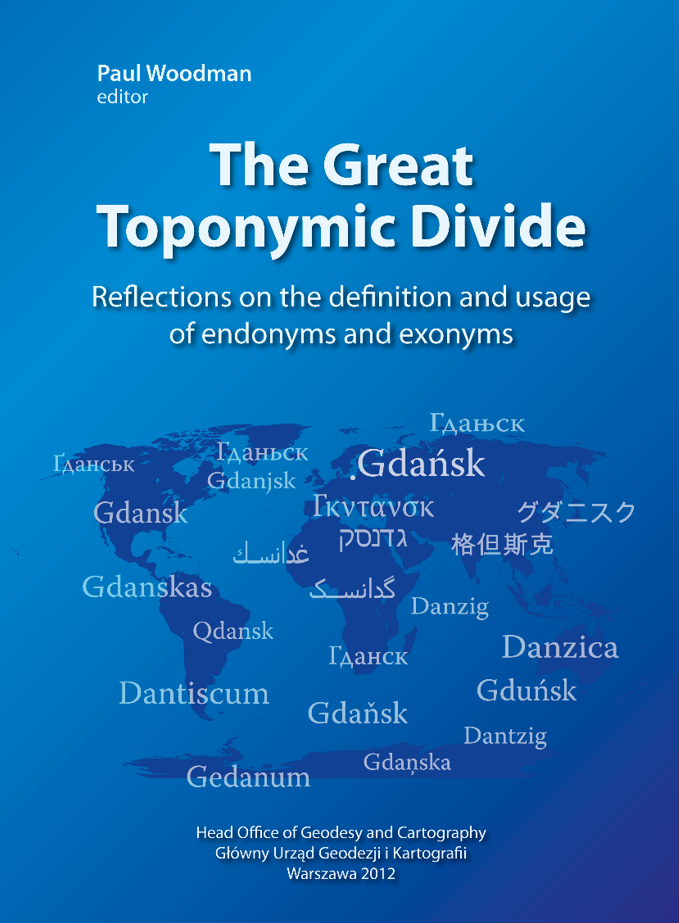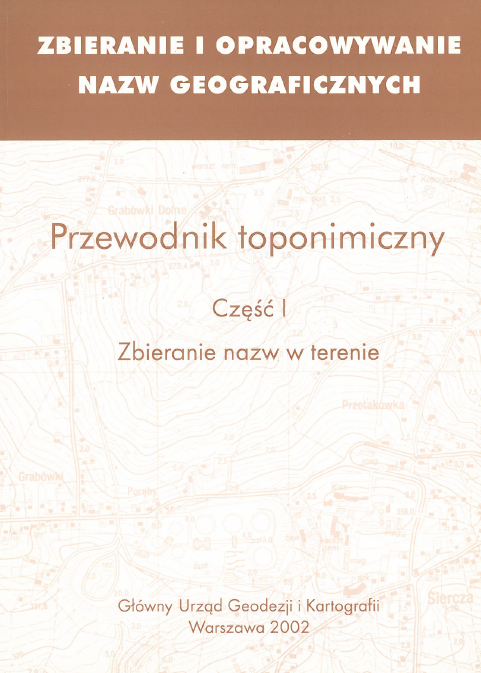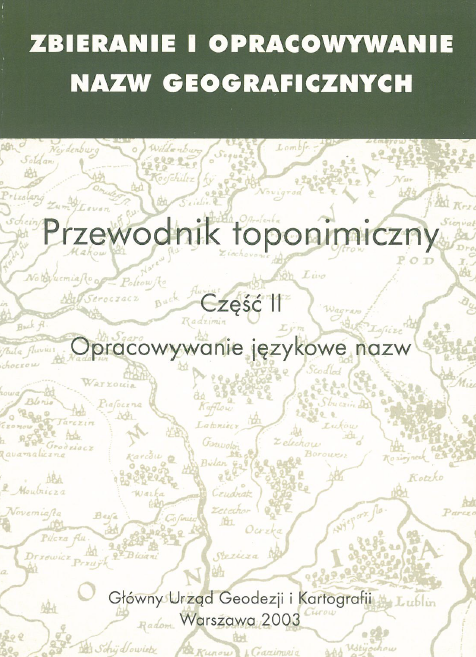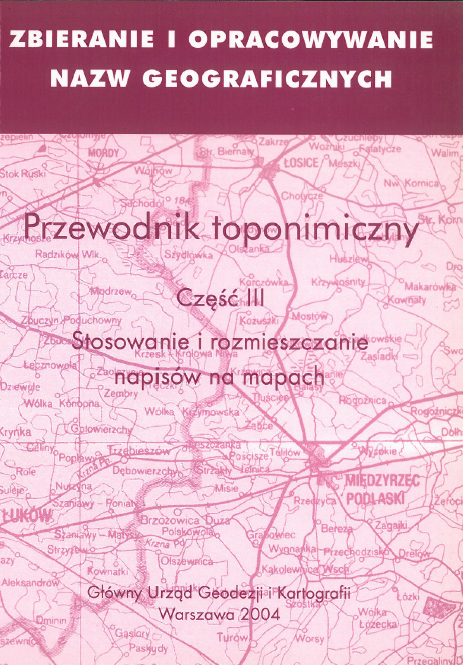
Paul Woodman (editor), published by Head Office of Geodesy and Cartography in 2012.
The book contains papers presented at the 12th Meeting of the UNGEGN Working Group on Exonyms in Gdańsk, Poland, in May 2012 plus one hitherto unpublished paper from the Working Group’s eleventh session, held in Vienna in May 2011. The papers deal with the endonym/exonym divide (“The Great Toponymic Divide”), exonym analysis and usage, endonyms and exonyms in minority language environments, and an endonym/exonym illustration from history.
Contents:
Section I – The endonym/exonym divide
Paul Woodman • The naming process: Societal acceptance and the endonym definition
Peter Jordan • Towards a comprehensive view at the endonym/exonym divide
Philip W. Matthews • Endonyms, exonyms and seas
Ojārs Bušs • On some possibilities for a more exact definition of exonyms
Paul Woodman • Endonyms, exonyms and language boundaries: A clarification
Maciej Zych • Definition of ‘exonym’ in the context of the new list of Polish exonyms
Herman Bell • Nubian perceptions of exonyms and endonyms
Halīm Sabbār • Numbers as geographical names in Nubia: Endonyms or exonyms?
Paul Woodman • Toponymic expression: Endonyms and exonyms in speech, writing and reading
Section II – Exonym analysis and usage
Małgorzata Mandola • French exonyms for Polish toponyms
Béla Pokoly • Trends in exonym use: Selected exonyms of the Hungarian language
Maria Del Mar Batlle • What is an endonym in Spain?
Bogusław R. Zagórski • Polish exonyms for the Arab world: How they come and go; what appears to stay
Ivana Crljenko • Geographical feature importance as a criterion for exonym selection: Croatian examples
Pavel Boháč • Names of European spatial features within the List of Czech Exonyms
Section III – Minority toponyms
Zsombor Bartos-Elekes • Minority toponyms in Romania
Mónika Mándoki, András Dutkó • Slovak names of settlements in Hungary
Ewa Wolnicz-Pawłowska, Maciej Zych • Place names in minority languages in Poland
Section IV – Endonyms, exonyms and an illustration from history
Paul Woodman • Toponymy in a landscape of aggression: Geographical names in National Socialist Germany



